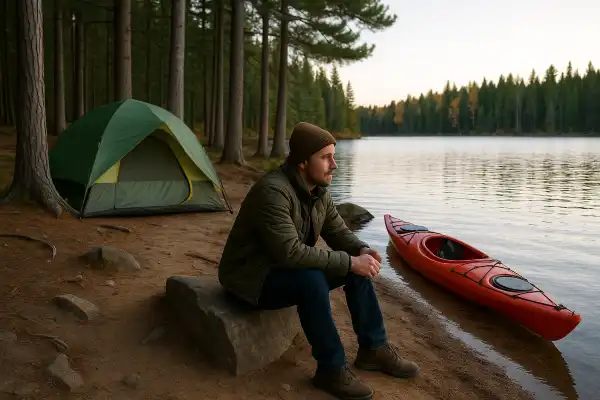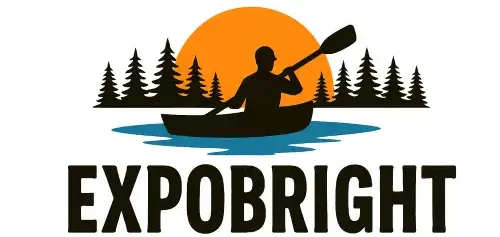Where can you kayak camp in Minnesota? This question comes up constantly in my inbox, and for good reason. Minnesota’s nickname as the “Land of 10,000 Lakes” doesn’t do justice to the reality—there are actually over 11,000 lakes here, along with countless rivers and streams that create an incredible network of paddling opportunities. Many newcomers to the sport feel overwhelmed by the sheer number of options available.
Just last spring, I guided a family from Wisconsin through their first multi-day paddle camping trip on the St. Croix River. Watching their excitement build as we explored hidden backwaters and set up camp on a secluded island reminded me why Minnesota holds such a special place in the hearts of paddlers. The state offers everything from beginner-friendly overnight trips in state parks to challenging wilderness expeditions that can stretch for weeks.
Where can you kayak camp in Minnesota?
Minnesota offers exceptional kayak camping opportunities across multiple public land systems, from state parks with 18 paddle-in campsites to vast wilderness areas with thousands of designated camping spots. The options range from comfortable beginner experiences to remote wilderness adventures that challenge even experienced paddlers.

Minnesota State Parks with paddle-in camping
Eleven of Minnesota’s state parks offer a cumulative 18 paddle-in campsites on lakes, rivers and creeks, large and small. These sites provide an excellent introduction to kayak camping, offering the comfort of developed infrastructure while still delivering that special experience of arriving at your campsite by water.
These primitive sites include a cleared area with tent pad, fire ring, picnic table and vault toilet. Most importantly for new kayak campers, a lot of these sites allow you a secondary approach on foot via trail back to the trailhead, landing or car campground where you’ve parked all the rest of your gear, in case something has been forgotten or the boating doesn’t go quite the way you expected.
The state park paddle-in sites require reservations and charge fees, but they provide peace of mind for those taking their first steps into overnight paddling. The reservation fee is $7 and a vehicle entrance pass is required to enter, park or launch your boat within state park boundaries.
Boundary Waters Canoe Area Wilderness
The BWCAW contains over 1,200 miles of canoe routes, 12 hiking trails and over 2,000 designated campsites. Named one of the “50 Places of a Lifetime” by National Geographic Traveler, the Boundary Waters is a paddler’s dream come true with more than 1,500 miles of canoe routes over 1,000 lakes, rivers and streams.
This million-acre wilderness requires advance planning and permits. From May 1 to September 30, if you plan on any kind of overnight visit to the Boundary Water (backpacking, canoeing or otherwise) you need to obtain a quota permit. The permit system exists to preserve the wilderness character that makes this area so special.
For kayakers specifically, it’s important to note that while this area is called the Boundary Waters Canoe Area, kayaks are absolutely welcome. The interconnected lakes and established portage trails create endless route possibilities, though you’ll need to be prepared for carrying your kayak between lakes.
Voyageurs National Park
Voyageurs National Park has over 270 Frontcountry and Backcountry tent camping, houseboat, or day use sites. What makes Voyageurs particularly appealing for kayak campers is that No PERMITS, NO FEES for camping or entrance, and NO GROUP SIZE LIMITS. Campsites are all currently on a first come basis.
All overnight sites and most day use sites are accessible only by boat. Due to its pristine water, paddle sports have become increasingly popular at Voyageurs. In fact, the park is renowned for its world-class sea kayaking.
The park consists of four large interconnected lakes—Rainy, Kabetogama, Namakan, and Sand Point—providing excellent opportunities for multi-day circumnavigation trips. A circumnavigation of the Kabetogama Peninsula is the ideal adventure to experience all that Voyageurs has to offer a paddler.
Minnesota State Water Trails
Minnesota has 35 state water trails with over 4,500 miles of terrific paddling. Many of these trails feature designated camping opportunities, from primitive watercraft campsites to connections with established campgrounds.
Primitive sites accessible only from the water. No vehicle parking allowed or available. First-come, first-served sites, with no fee charged at this time. These sites typically have minimal facilities but provide that true wilderness camping experience that many paddlers seek.
The water trail system includes everything from gentle family-friendly rivers to challenging whitewater sections. Popular trails for kayak camping include sections of the Mississippi River, St. Croix River, and numerous smaller waterways throughout the state.
St. Croix National Scenic Riverway
Along the scenic banks and backwaters of this Minnesota-Wisconsin border river are a large inventory of primitive shoreline campsites, furnishing the basic needs of the paddle camper. Expect cleared tent spaces for several tents, a fire ring and a pit toilet. Often a picnic table.
Administered by the National Park Service – these are free to use, no reservations able or required. The St. Croix offers some of the most scenic paddling in the Midwest, with clean, clear waters and pristine surroundings.
The river is particularly stunning during fall color season, typically from late September through mid-October. Multiple state parks along the river provide additional camping and access options for those planning longer expeditions.
Lake Superior State Water Trail
The Minnesota portion of the Lake Superior State Water Trail extends from the St. Louis Bay in Duluth to the Pigeon River on the Canadian border, a distance of approximately 150 miles. This represents one of the most challenging and rewarding kayak camping experiences in Minnesota.
Sea kayaks are better suited to these unprotected and often windswept waters. Lake Superior’s rocky shoreline is beautiful, but often treacherous, requiring advanced skills and appropriate equipment.
The North Shore offers spectacular scenery, including sheer cliff faces, sea caves, and some of the oldest rock formations on earth. However, Calm summer waters can change to life-threatening conditions in minutes, making this suitable only for experienced sea kayakers.
Planning considerations
Water treatment is essential at most locations. Drinking water is not provided at most campsites. Be prepared to treat all water from the lake and rivers. I always carry both a reliable water filter and purification tablets as backup.
Group size restrictions apply in many areas. Camp in groups of 6 or less is a common rule across state parks and wilderness areas. This helps preserve the wilderness experience and reduces environmental impact.
Fire regulations vary by location and season. State forests allow you to gather dead wood for a fire, but state parks do not. Always check current fire restrictions before your trip, and consider carrying a lightweight camp stove as backup.
Conclusion
Last October, I spent three days kayak camping through a chain of lakes in the Superior National Forest, just outside the Boundary Waters permit area. As I set up camp on a small island surrounded by blazing red maples, I was reminded once again why Minnesota ranks among the world’s premier kayak camping destinations. The combination of pristine waters, abundant wildlife, and well-managed public lands creates opportunities that simply don’t exist elsewhere.
Following a comprehensive guide like this can make the difference between a successful adventure and a frustrating experience, especially for those new to overnight paddling. Minnesota’s waters are generous to those who come prepared, but they demand respect and proper planning. Choose your location based on your skill level, check regulations and permits well in advance, and always prioritize safety over ambition. The lakes will still be there for your next adventure.
